When we think of Ancient Egypt, we often imagine majestic pyramids, intricate hieroglyphs, and powerful pharaohs. But nestled in the heart of this ancient civilization were places of tranquility and beauty: the gardens. These gardens were not only designed to enhance the landscape but were deeply intertwined with Egypt’s spiritual and cultural life. From royal palaces to temple courtyards, Egyptian gardens reflected both earthly pleasures and divine symbolism.
- Egypt Tour Magic
- Egypt Tour Packages
- Excursions in Egypt
- Cairo Tours and Excursions
- Hurghada Tours and Excursions
- Soma Bay Tours and Excursions
- Makadi Bay Tours and Excursions
- Sahl Hasheesh Tours and Excursions
- El Gouna Tours and Excursions
- Marsa Alam Tours and Excursions
- Port Ghalib Tours and Excursions
- El Quseir Tours and Excursions
- Dendera and Abydos Day Tours
- Aswan Tours and Excursions
- Luxor Tours and Excursions
- Alexandria Tours and Excursions
- Sharm El Sheikh Tours and Excursions
- Top Rated Tours in 2025
- Optional Excursions in Egypt
- Private Transfer
- Blogs About egypt
- Ancient Egypt
- What You Need To know Before Your First Trip To Egypt
- Best Places to Visit in Egypt 2025
- Top Attractions in Red Sea Resorts 2025
- Top 10 Tourist Activities in Egypt
- Top 30 Activities You Can’t Miss in Egypt
- The Guide to Guided Tours in Egypt
- Egypt’s Ancient and Modern History
- The Nile River
- The Deserts of Egypt
- Historical Sites in Egypt
- Cairo
- Alexandria
- Luxor
- Aswan
- The Red Sea
- Dendera Temple
- El Fayoum Oasis
- Bahariya Oasis
- Siwa Oasis
- Al Alamein
- Marsa Matruh
- Ancient Egyptian gods
- famous Egyptian dishes
- UNESCO World Heritage sites
- About Us
- Why Egypt Tour Magic
- Egypt Tour Magic
- Egypt Tour Packages
- Excursions in Egypt
- Cairo Tours and Excursions
- Hurghada Tours and Excursions
- Soma Bay Tours and Excursions
- Makadi Bay Tours and Excursions
- Sahl Hasheesh Tours and Excursions
- El Gouna Tours and Excursions
- Marsa Alam Tours and Excursions
- Port Ghalib Tours and Excursions
- El Quseir Tours and Excursions
- Dendera and Abydos Day Tours
- Aswan Tours and Excursions
- Luxor Tours and Excursions
- Alexandria Tours and Excursions
- Sharm El Sheikh Tours and Excursions
- Top Rated Tours in 2025
- Optional Excursions in Egypt
- Private Transfer
- Blogs About egypt
- Ancient Egypt
- What You Need To know Before Your First Trip To Egypt
- Best Places to Visit in Egypt 2025
- Top Attractions in Red Sea Resorts 2025
- Top 10 Tourist Activities in Egypt
- Top 30 Activities You Can’t Miss in Egypt
- The Guide to Guided Tours in Egypt
- Egypt’s Ancient and Modern History
- The Nile River
- The Deserts of Egypt
- Historical Sites in Egypt
- Cairo
- Alexandria
- Luxor
- Aswan
- The Red Sea
- Dendera Temple
- El Fayoum Oasis
- Bahariya Oasis
- Siwa Oasis
- Al Alamein
- Marsa Matruh
- Ancient Egyptian gods
- famous Egyptian dishes
- UNESCO World Heritage sites
- About Us
- Why Egypt Tour Magic
Exploring the Beauty and Symbolism of Ancient Egyptian Gardens
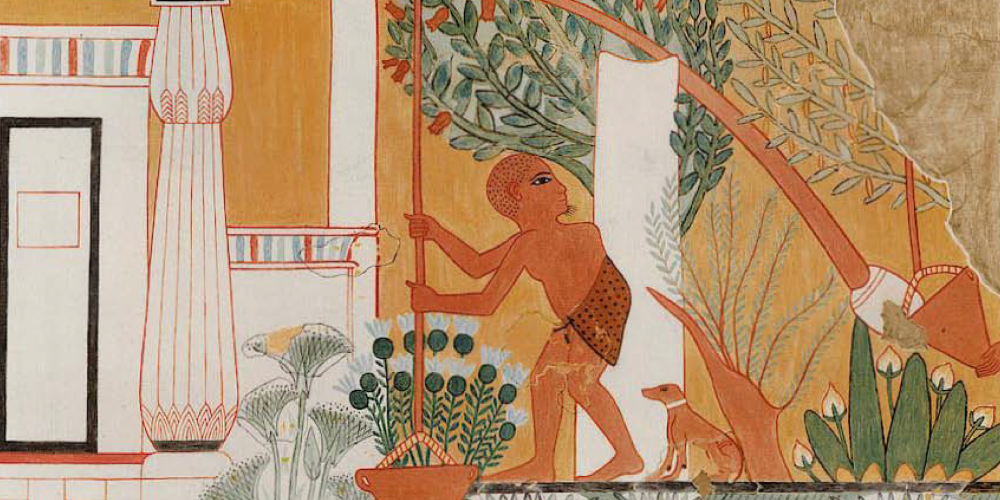
The Spiritual Significance of Egyptian Gardens
For the Ancient Egyptians, gardens were much more than places for leisure. They were seen as earthly representations of paradise, a place where nature and the divine met. Gardens were often associated with the mythical “Garden of the Gods,” an idyllic space filled with flourishing plants, serene waters, and abundant life—concepts that were central to Egyptian religious beliefs.
The Egyptians viewed nature as a direct gift from the gods, and gardens were created to honor these divine forces. It is no coincidence that many of Egypt’s grandest gardens were situated near temples or tombs—places where the divine was thought to dwell.
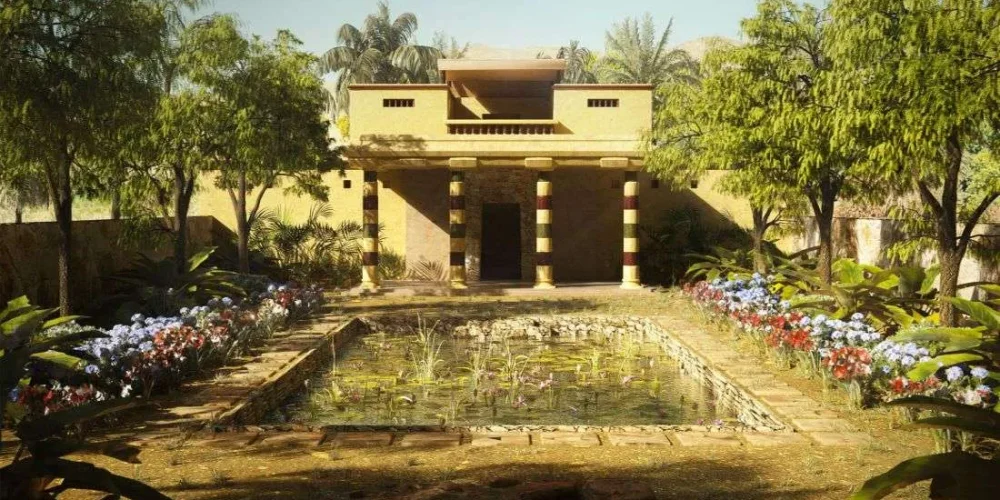
The Role of Water and Pools
Water was central to the design of Egyptian gardens, and many gardens included pools or small canals for irrigation. These water features were more than just functional; they also had a symbolic connection to the Nile River, which was the lifeblood of Egyptian civilization.
In addition to their role in irrigation, water features in gardens created a peaceful and reflective atmosphere. The calm surface of the water was also used as a mirror to reflect the beauty of the plants, trees, and surrounding architecture.
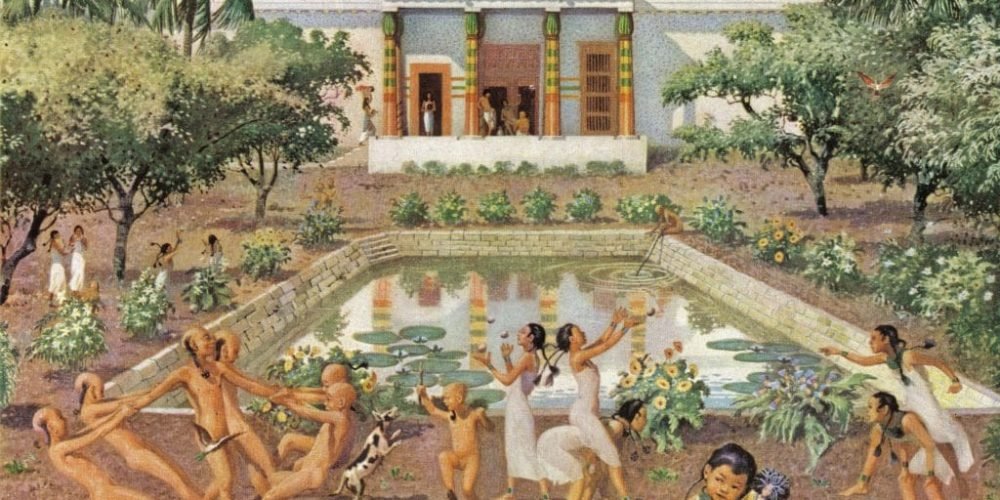
Layout and Design: The Geometry of Nature
Ancient Egyptian gardens were designed with a careful, geometric layout. The use of symmetry was crucial, reflecting the Egyptians’ belief in balance and order in the natural world. These gardens often featured rectangular shapes, with plants and pathways laid out in orderly patterns. Raised flowerbeds and neatly trimmed plants were used to create a sense of harmony and beauty.
The key design element of these gardens was water, which was often incorporated in the form of pools or small canals. Water held great symbolic value in Egypt, representing life and fertility. It also served the practical purpose of irrigation, essential in a desert landscape. The flowing water provided both aesthetic beauty and ensured the garden thrived in the dry climate.
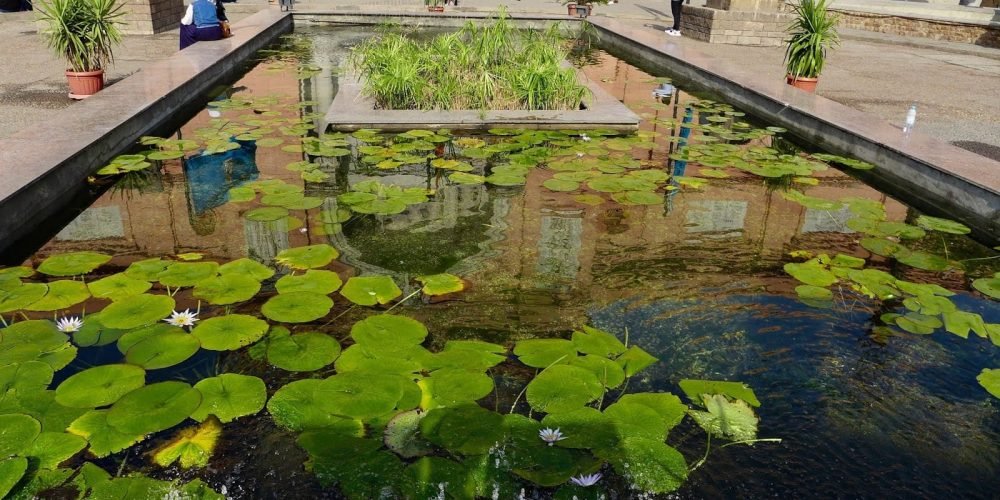
Gardens as Royal Spaces
While many gardens served religious or ceremonial purposes, they were also places of leisure for the elite and royalty. Pharaohs and nobles used their private gardens to relax and entertain, often holding elaborate feasts and gatherings surrounded by the beauty of nature.
A well-known example of a royal garden is found at the tomb of Nebamun, a high-ranking official in the 18th Dynasty. The frescoes in his tomb show a lush, orderly garden filled with trees, pools, and meticulously arranged flowerbeds. This scene highlights the importance of gardens not only as a space of beauty but as a symbol of the afterlife.
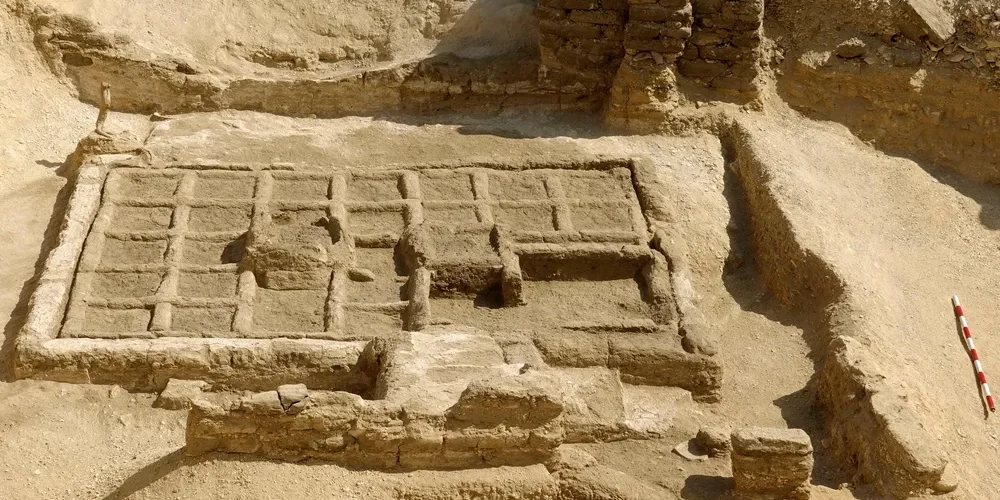
Gardens in Temples and Tombs
Gardens also had an important role in religious rituals. In temples, gardens were created as sacred spaces to honor the gods, and they often contained plants believed to have divine properties. Gardens were designed to reflect the heavenly paradise that the Egyptians believed awaited the soul after death.
At tombs, gardens were symbolic of the eternal life that the deceased would experience in the afterlife. Some tombs had miniature gardens created to mirror the earthly gardens, offering a space for the soul to rest and find peace.

Lasting Influence on Garden Design
The legacy of Egyptian garden design continues to influence landscape architecture today. The use of symmetry, water features, and sacred symbolism in garden layouts can still be seen in modern designs that seek to blend nature and spirituality.


